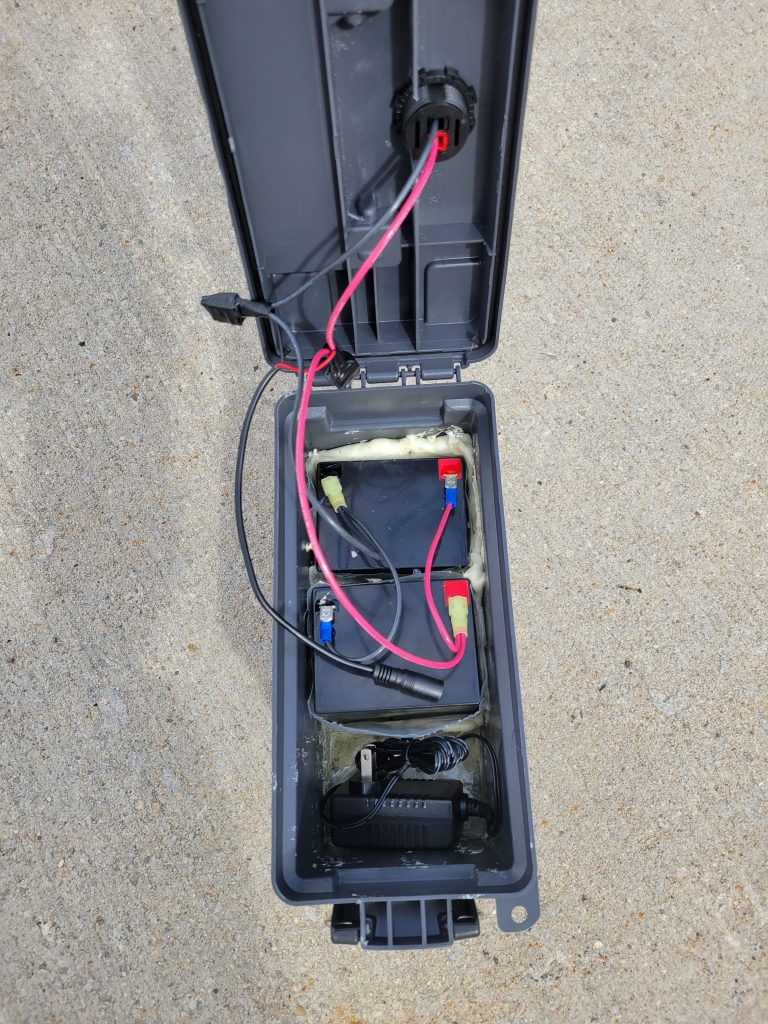POTA Power Source
Portable Power Box
by KR3L
A simple and easy project is a portable power source for remote operations. This project can be used to support SOTA/POTA operations as well as support emergency operations. This project is a lightweight 12-volt power supply that has provides 12 Ah rating
Materials:
- 2 – 12v 6Ah LiFePO4 battery Packs
- 1 – Powerwerx PanelPole 1
- 1 – Plastic Ammo Box
- 1 – Can spray foam
- 14 ga Wire

I started the project by removing the lid and drilling a hole in the lid of the box to place a Powerwerx Power Panel. I used a single pole for this project. You may choose to use a 2-pole panel. I installed a weather-tight cover. I plan on using this for POTA operations.
The box is going to be moved around and may roll around in the back of a vehicle. I did not want the batteries shifting around during transport. I sprayed insulating foam on the bottom of the box. I sprayed an inch of foam. The batteries I used came with a plastic bag covering them, which I left in place. If your batteries do not come in a plastic bag, you can use a sandwich bag. Place the batteries into foam and push them down to set them in place. Leave about a ¼” space between the back of the box and battery. Leave a ¼” space between batteries. Fill the spaces with insulating foam. Close to the top of the battery. I used a block of wood to level out the space in front of the box and battery. This will give you a smooth surface on the bottom layer of foam.

The insulating foam does two things. One it protects the batteries from sudden impact. The second is that it keeps the batteries from sliding around in the box. The plastic bags allow you to be able to slide the batteries in and out of the case because foam is adhering to the plastic bag and not the battery.
Now just wire the batteries in parallel. I used quick disconnects terminals to connect to batteries. The batteries I used come with a charger. I wired in the charging port so the batteries do not need to be disconnected when being recharged. The space in front of the battery holds the 110-volt charger. The complete system is self-contained. Bonus – The inline charging port can also accept a plug from a solar panel, a future addition.
A great recommendation made by Brian KB3ORR is that anyone building a power box check voltages with a multimeter before connecting any equipment. He also recommends having a properly sized fuse between the batteries as well as any connected equipment.
I tested this setup and was able to run a Xeigu G-90 with a cooling fan attachment operating at 15 watts using FT8 for about seven hours of operation. The batteries will initially provide 13.6 volts after being fully charged. I would also recommend that you fully charge it before using in any field operations. If the unit is sitting for a long period of time the batteries may discharge some power.